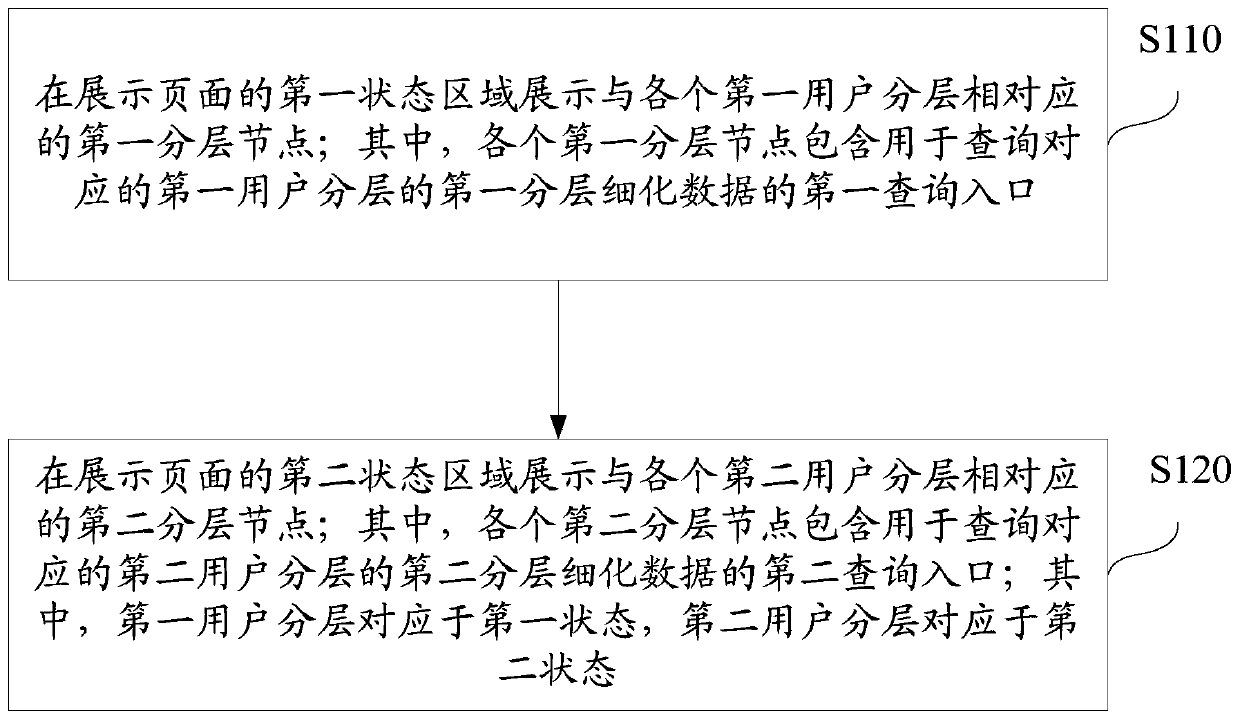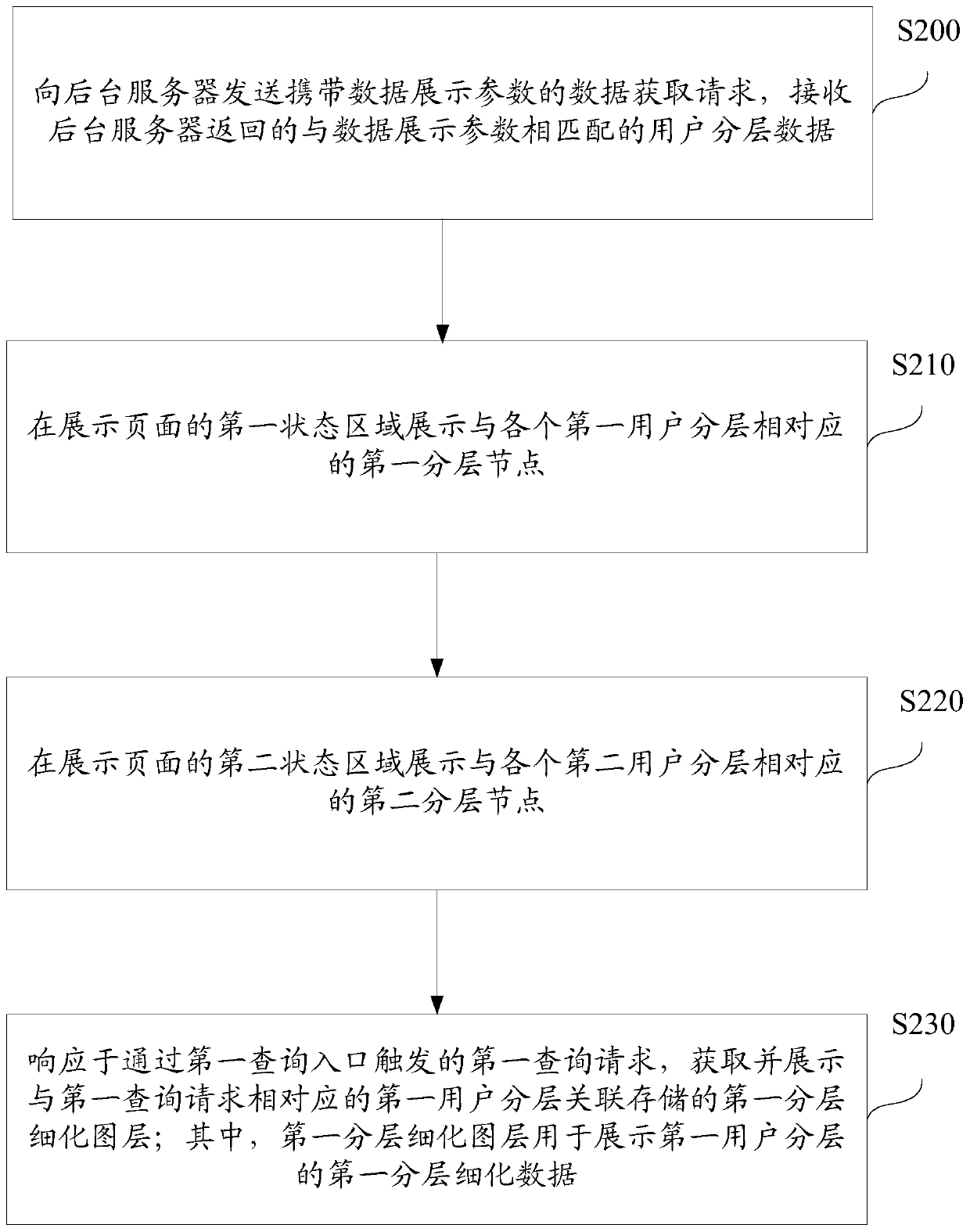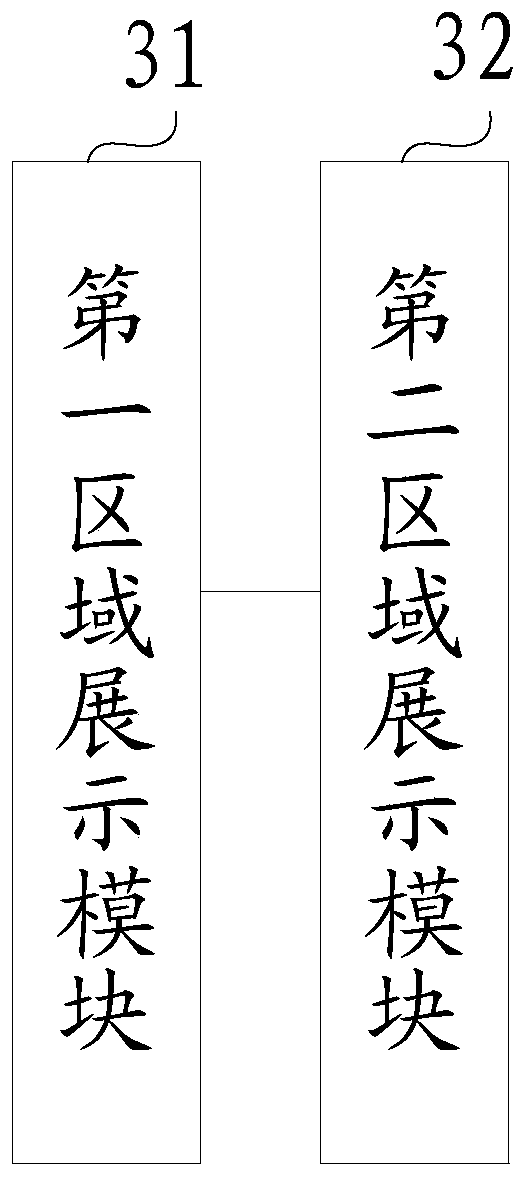User hierarchical data display method and device
A technology of layered data and number of users, applied in the field of electronic information, can solve the problems of not being able to display the total number of users, and not being able to display user stratification at the same time
- Summary
- Abstract
- Description
- Claims
- Application Information
AI Technical Summary
Problems solved by technology
Method used
Image
Examples
Embodiment 1
[0083] figure 1 A flow chart of a method for displaying user hierarchical data provided by Embodiment 1 of the present invention is shown. like figure 1 As shown, the method includes:
[0084] Step S110: Display the first layer nodes corresponding to each first user layer in the first status area of the display page; wherein each first layer node contains a first layer node for querying the corresponding first user layer The first query entry for hierarchically refined data.
[0085] Wherein, the first state area is used to display each first user layer corresponding to the first state. The first state may be the start state corresponding to the start time, or the state before the preset service is released. In addition, each first user layer in the first state includes multiple user layers respectively corresponding to different layers. The specific layering method can be divided according to factors such as user behavior and user type of the user, and the present inve...
Embodiment 2
[0095] figure 2 A flow chart of a method for displaying user hierarchical data provided by Embodiment 2 of the present invention is shown. In this embodiment, the user hierarchy is mainly divided according to the user life cycle determined by user behavior. For example, according to the frequency of user-triggered user interactions, all users are divided into five levels: potential users, initial users, active users, declining users, and silent users. Wherein, in one implementation manner, user interaction behaviors include user interaction behaviors triggered for each service end within the entire network; in another implementation manner, user interaction behaviors are limited to ) triggered user interaction behavior. In this embodiment, the latter implementation manner is taken as an example for description. Among them, the business end can provide users with various entity or non-entity business services, for example, it can be a store end. Correspondingly, potential ...
example 1
[0114] In this example, the first state is the initial state, and the first user hierarchy is the initial state user hierarchy; the second state is the termination state, and the second user hierarchy is the termination state user hierarchy. Correspondingly, when determining each second user layer that has a conversion relationship with the first user layer, and the layer conversion data corresponding to each second user layer for the first user layer, it is specifically implemented in the following manner: determine Each terminal state user layer has a destination class conversion relationship with the initial state user layer, and the initial state user layer corresponds to the destination class conversion data of each terminal state user layer. Accordingly, a first hierarchical refinement layer is presented based on the above data.
[0115] Image 6 A schematic diagram of the first hierarchical refinement layer corresponding to the destination class transformation data is ...
PUM
 Login to View More
Login to View More Abstract
Description
Claims
Application Information
 Login to View More
Login to View More - R&D
- Intellectual Property
- Life Sciences
- Materials
- Tech Scout
- Unparalleled Data Quality
- Higher Quality Content
- 60% Fewer Hallucinations
Browse by: Latest US Patents, China's latest patents, Technical Efficacy Thesaurus, Application Domain, Technology Topic, Popular Technical Reports.
© 2025 PatSnap. All rights reserved.Legal|Privacy policy|Modern Slavery Act Transparency Statement|Sitemap|About US| Contact US: help@patsnap.com



